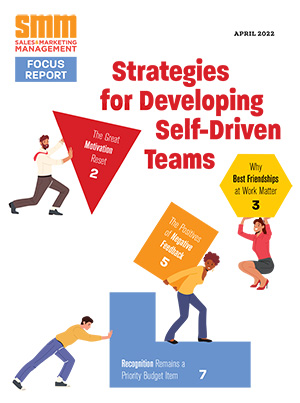
There is plenty of buzz around the term “sales enablement,” but if you ask 10 B2B marketing professionals what the term means, you may get 20 different answers. Nichole Auston of RO|Innovation, a provider of marketing technology solutions, points out that there are over 80,000 Google search results when you query the term “definition of sales enablement.” It’s blind men describing an elephant circa 2015.
“Unlike established corporate functions like accounting, finance and marketing, sales enablement is still evolving, and the term means different things to different companies,” says Jim Ninivaggi, service director, sales enablement strategies at Sirius Decisions. “Sales enablement’s mission, where it reports, how it is funded and what it is responsible for vary from company to company,” he adds.
SiriusDecisions conducts ongoing research to understand the function of sales enablement and how it is changing. The top four responses it received to the question of function were:
• Provide guidelines for using sales assets (78 percent)
• Share enablement best practices (73 percent)
• Build sales assets (71 percent)
• Develop product training (68 percent)
Ninivaggi quickly adds that the meaning of the term seems capable of expanding on an as-needed basis. RO|Innovation, a company that emphasizes the value of enlisting happy customers as advocates, not surprisingly incorporates that into their definition of sales enablement.
Auston states, “Whether the right customer content for a salesperson’s selling situation is a video, case study, press release, presentation deck or testimonial quote, we believe it is critical for a sales enablement technology to provide a salesperson with the ability to:
• Easily search for the most relevant customer-related assets.
• Activate the right customer assets for use in the sales cycle at the right time.
• Track the usage of those customer assets to let salespeople know when to follow up with their prospect and with what message.
• Provide the salesperson with the capacity to do everything mentioned above wherever and however they sell (i.e. desktop, laptop, Blackberry, smart phone or tablet).
“The primary focus of sales enablement is simple: increasing the effectiveness of each customer interaction,” states Drew Zarges of the Sales Benchmark Index, a sales and marketing consultant. He offers his own four-point plan for effective sales enablement that helps move a sales opportunity forward:
• Develop the right sales content
• Get it into the hands of the right sellers
• Do so at the right time
• Through the right channel
The end game seems clear: efficiency and effectiveness throughout the sales process. Doug Winter, the founder and CEO of Seismic, a leading sales enablement platform, states, “The companies that figure out how to evaluate, implement and execute sales enablement strategy will spend more time in front of customers, sell more effectively and build customer loyalty.”


